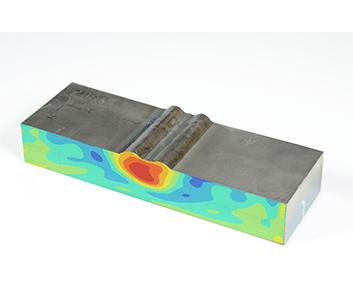Welding is a very common manufacturing process that is used to join materials together to form assemblies and systems. In many cases the welded joints are large, have reduced material properties (e.g., stress corrosion cracking resistance, fracture toughness), and contain defects. The welded joints tend to be critical locations in terms of design and sustainment. For this reason, residual stress in welding is a primary concern. Hill Engineering has extensive experience with residual stress measurements and welding residual stress.
Residual stress in welding is mainly the result of thermal expansion, which in basic terms means that materials expand or contract with temperature. Typical engineering materials tend to shrink in size as they cool. As we all know, welding is a highly thermal process where significant heat is applied at the weld joint. The material within the weld joint shrinks as it cools and, as a result, welding residual stress develops as the nearby material pulls back to maintain a bond with the shrinking weld material.
Residual stress in welding is a very common application for Hill Engineering. We work applications on a daily basis involving measurement of welding residual stress. One of the most useful techniques for measuring welding residual stress is the contour method. The contour method provides a 2D map of residual stress, which his helpful for resolving complex details of the welding residual stress distribution.
We’ll highlight some applications of residual stress in welding in future blog posts and case studies on our website, so please check back for updates (or subscribe to our mailing list or social media accounts on the main page). In the meantime, please contact us for more information.

Illustration of residual stress in welding based on results from a contour method residual stress measurement on a welded titanium specimen.